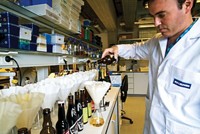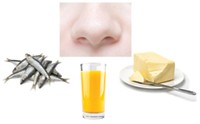Advertisement
Grab your lab coat. Let's get started
Welcome!
Welcome!
Create an account below to get 6 C&EN articles per month, receive newsletters and more - all free.
It seems this is your first time logging in online. Please enter the following information to continue.
As an ACS member you automatically get access to this site. All we need is few more details to create your reading experience.
Not you? Sign in with a different account.
Not you? Sign in with a different account.
ERROR 1
ERROR 1
ERROR 2
ERROR 2
ERROR 2
ERROR 2
ERROR 2
Password and Confirm password must match.
If you have an ACS member number, please enter it here so we can link this account to your membership. (optional)
ERROR 2
ACS values your privacy. By submitting your information, you are gaining access to C&EN and subscribing to our weekly newsletter. We use the information you provide to make your reading experience better, and we will never sell your data to third party members.
Environment
Instrument-Based Coffee Taster Developed
February 18, 2008
| A version of this story appeared in
Volume 86, Issue 7
Coffee scientists have long wanted to develop an instrument as good as trained panelists at evaluating sensory characteristics of coffee. A project team at Nestlé Research Center, in Lausanne, Switzerland, led by Christian Lindinger now may have achieved that goal (Anal. Chem., DOI: 10.1021/ac702196z). The researchers developed a coffee sensory model by using proton transfer reaction mass spectrometry to measure 16 characteristic ions from the vapor above coffee samples and correlating their levels with sensory profiles created by a panel of trained coffee tasters. They then used the model to accurately predict sensory characteristics of eight new coffee samples. Five of 11 characteristics evaluated by panelists (citrus, flowery, acidic, bitter, and winy) proved most effective at discriminating among different coffee tastes, and these same attributes were also predicted most accurately by the instrumental data. Just two minutes of measurements and simple calculations are required to predict a sensory profile, and the researchers believe high-throughput coffee tasting will be possible.




Join the conversation
Contact the reporter
Submit a Letter to the Editor for publication
Engage with us on Twitter